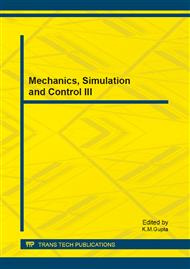p.50
p.57
p.63
p.68
p.73
p.78
p.84
p.90
p.96
Finite Element Analysis of the Material Properties’ Influence on Tire/Road Contact Pressure and Area
Abstract:
When designing a tire, a good contact pressure distribution and a good contact area are necessary. The contact pressure and contact area are determined by tire material and structure, but there is few public researches on these. So, in this article, tire material properties’ influence on tire/road contact pressure and area are analyzed by using finite element method. The results show that there are ten rubber materials have negative correlation with contact pressure, the most effective material is tread rubber; there are four rebar materials have positive relation with contact pressure, the major is the first belt rebar. But they are different in contact area: the most effective rebar to contact area is bead rebar. The positive and negative effect factors and the effect coefficients are obtained for the seventeen rubber materials and seven rebar materials in tire about contact pressure and contact area. That has an important guidance on tire design and engineering applications.
Info:
Periodical:
Pages:
73-77
Citation:
Online since:
August 2013
Authors:
Keywords:
Price:
Сopyright:
© 2013 Trans Tech Publications Ltd. All Rights Reserved
Share:
Citation:


